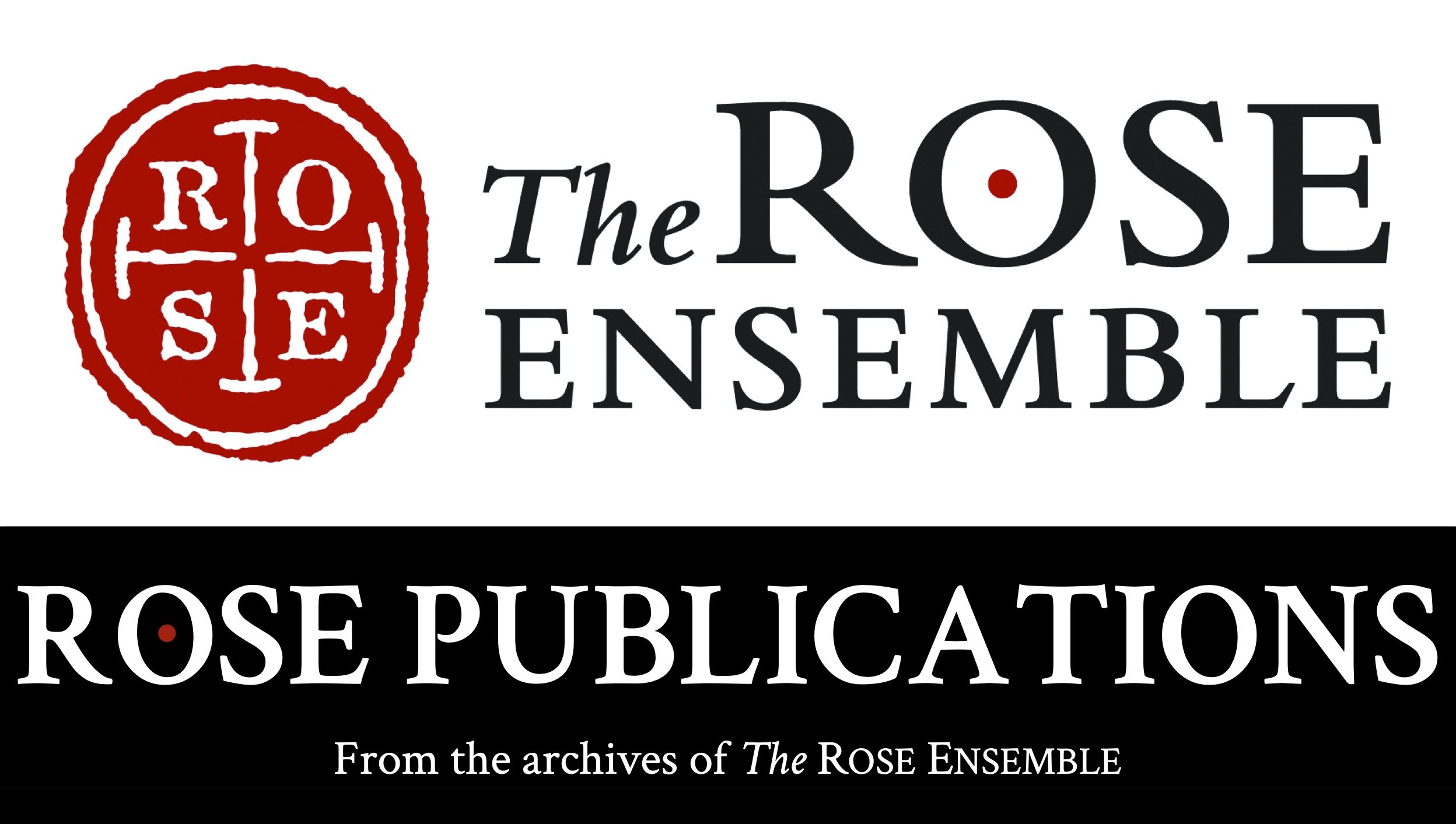ABOUT ROSE PUBLICATIONS
Rose Publications was created to advance the programmatic legacy of The Rose Ensemble (1996-2021), which achieved an international reputation for uniting virtuosic vocal artistry with scholarly research, and for connecting audiences to compelling stories of human history, culture, and spirituality from around the world. Rose Publications is led by Rose Ensemble Founder/Artistic Director, Jordan Sramek, along with Co-General Editor Daniel Mahraun, former Rose Ensemble musician and current artistic director of the Seattle Bach Choir.
“Due to the popularity of its performances, recordings, and radio broadcasts, The Rose Ensemble received countless score inquiries over the years.”
Due to the popularity of its performances, recordings, and radio broadcasts, The Rose Ensemble received countless score inquiries over the years. But it was difficult to fulfill these public requests, primarily because what I prepared for the musicians of The Rose Ensemble were what I suppose could be called “internal editions.” Our rehearsals and performances featured the practical use of original source material that is often difficult to read…and certainly my hand-written transcriptions (and my notoriously bad handwriting) would be too difficult for most people to decipher.
Continued interest in The Rose Ensemble’s work (long after the group’s final performance) motivated me to start Rose Publications. I of course wanted to offer good, clean, musical scores, but I was keen on ensuring that the repertoire’s vital research was prominent in the editions. This was difficult to balance, because I certainly wanted the scores to remain accessible, and I didn’t want them to come across as dissertations. At the same time, I was committed to providing program notes featuring succinct, relevant, historical and cultural contexts, as well as user-friendly pronunciation guides, performance recommendations, and even facsimiles. These things individually are hardly unique, but I must say that I seldom see them offered in such a comprehensive way. I believe this is what sets Rose Publications apart.”
“...they all helped shape and foster the fusion of traditional Hawaiian culture and lyrical poetry with New England-style hymnody....”
Persisting stereotypes, racism, and the rewriting of history have warped the general public’s perception of and interest in Hawaiian cultural traditions. These things have also caused the choral world to largely ignore the cultural treasure that is early Hawaiian vocal music. On the rare occasion it is programmed, the implied categorization is usually “world music” or “folksong,” even though it actually holds a rightful place on what I will here, intentionally, call the classical music stage. It is of course its own unique body of repertoire worthy of standing alone, but I believe it also provides a wonderfully enlightening opportunity for any choral musician hoping to create or enhance an “American” program.
In addition to 19th-century Hawaiian hymnody featured in our published collection, a notable example would be the art songs composed by members of the Royal Hawaiian family. During the latter half of the nineteenth century, Hawaiian music was dominated by four siblings known as Nā Lani Ehā (“The Royal Four”): David Kalākaua (1836-91), Liliʻuokalani (1838-1917), Miriam Likelike (1851-87), and William Pitt Leleiohōkū (1854- 77). While they all helped shape and foster the fusion of traditional Hawaiian culture and lyrical poetry with New England-style hymnody–utilizing their gifts and royal education to create a new form of musical expression–it was Liliʻuokalani who was the most prolific…and influential. Harvard ethnomusicologist Helen Roberts writes: “These songs represent a period in which the foreign art, stamped with a fresh viewpoint, was being adopted by the Hawaiians, and made to assume distinctive features at their hands.”
I also wanted to make sure that choral musicians not interested in historical hymns or art songs could still program Hawaiian vocal music. Thepaniolo(Hawaiian cowboy) songs, although challenging, are just so much fun...and they reveal fascinating details of political, agricultural, and immigration history in the Hawaiian Islands.
“...the driving force behind my decision to dedicate a whole Rose Publications volume based on the group’s commercial recording, ‘And Glory Shone Around.’”
The Rose Ensemble’s international reputation as interpreters of early-American music was the driving force behind my decision to dedicate a whole Rose Publications volume based on the group’s commercial recording, “And Glory Shone Around.” Years of performing this music in places like Italy, France, Germany, and Spain revealed that European audiences typically expect American choirs to represent American music by performing modern arrangements of African-American spirituals. With no shortage of American choirs in Europe, it seemed an opportunity to enlighten European audiences with additional chapters of early-American musical history (including Hawaiian history, by the way), which was met with both surprise and delight.
Closer to home, score requests over the years have been largely related to The Rose Ensemble’s interpretation of Shaker hymns and Southern Harmony melodies. There is so much more to these genres than the iconic “Simple Gifts” or a throat-bleeding performance of a song from “The Sacred Harp,” yet I am amazed by how limited the published options are. So, I’m particularly excited to finally make available our arrangements of placid Shaker gems like “Give Good Gifts” and “Harps of Welcome,” as well as the full-voice, shape-note selections “Jordan’s Shore” and “Star in the East.”
– Jordan Sramek

